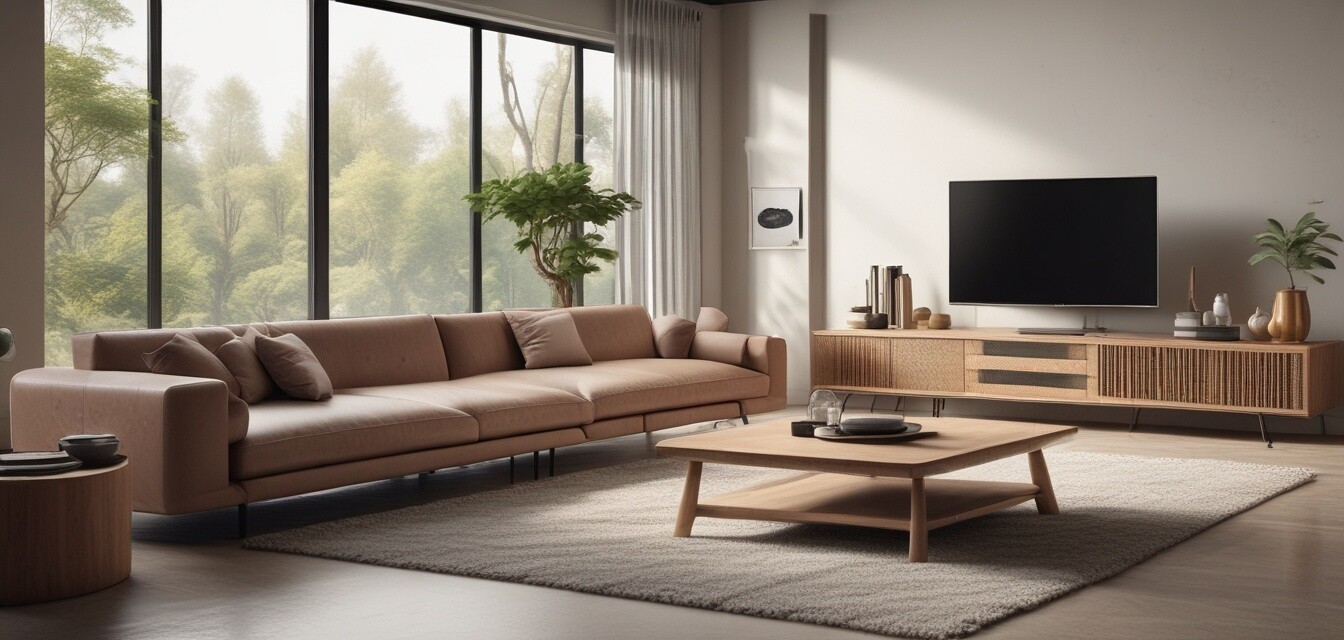
How Climate Change is Influencing Furniture Design
Key Takeaways
- Climate change is driving the trend towards sustainable furniture materials.
- Consumers are increasingly prioritizing eco-friendly design in their choices.
- Innovative designs are emerging to minimize environmental impact while maintaining style.
- TV stands are at the forefront of this design shift, combining function with eco-conscious choices.
- By using sustainable materials, brands are responding to the demand for greener living solutions.
Introduction
Furniture design is experiencing a significant transformation as the urgency of climate change catalyzes new trends. As consumers become more aware of environmental concerns, the demand for eco-friendly solutions has risen dramatically. This shift in consumer attitudes is compelling designers and manufacturers to innovate sustainably, particularly in popular categories like TV stands. In this article, we will explore how climate change is influencing furniture design and the shift towards more sustainable practices.
The Impact of Climate Change on Furniture Design
Climate change is not just a wake-up call for industries; it's reshaping how products are designed and produced. The furniture industry is no exception. Here are some key areas where this impact is evident:
- Material Sourcing: Traditional materials like hardwood are being carefully sourced or replaced with alternatives.
- Design Efficiency: Furniture is being designed with longevity in mind, reducing waste and environmental impact.
- End-of-Life Considerations: There is a growing emphasis on materials that are recyclable or biodegradable.
Emerging Trends in Eco-Friendly Furniture
As brands respond to the climate crisis, new trends are emerging in furniture design. Here are some notable trends in the realm of sustainable furniture:
| Trend | Description | Example of Use |
|---|---|---|
| Reclaimed Materials | Using wood and metals that are recycled or repurposed. | Reclaimed wood TV stands that carry a unique story. |
| Bamboo Construction | Utilizing bamboo for furniture due to its rapid growth. | Bamboo floating TV stands that are lightweight yet sturdy. |
| Modular Design | Creating furniture that can be reconfigured for various uses. | Modular entertainment consoles that adapt to different room layouts. |
| Non-Toxic Finishes | Applying finishes that are free from harmful chemicals. | Eco-friendly coatings for contemporary TV furniture. |
Why Sustainable Furniture Matters
The importance of sustainable furniture goes beyond aesthetics. Here are some reasons why the focus on eco-friendly design is essential:
- Environmental Responsibility: Reducing the carbon footprint and promoting healthy living spaces.
- Consumer Demand: A rising trend towards sustainable choices is reshaping the market.
- Innovation and Creativity: Sustainability challenges designers to think outside the box, leading to unique creations.
The Role of Technology in Sustainable Furniture
Today's technology is instrumental in paving the way for innovative furniture design. Here are ways technology contributes to sustainability:
- 3D Printing: Allows for precise and efficient production while minimizing material waste.
- Smart Materials: Development of materials that change properties based on their environment, enhancing durability.
- Online Marketplaces: Make it easier for consumers to find and purchase sustainable furniture options.
Choosing the Right Eco-Friendly TV Stand
When selecting a sustainable TV stand, consider the following factors to ensure your choice aligns with eco-friendly values:
Tips for Beginners
- Check for certifications indicating sustainable practices.
- Look for furniture made from renewable materials.
- Assess the longevity and repairability of the TV stand.
- Investigate the company's production processes and sourcing policies.
Conclusion
The influence of climate change on furniture design represents a pivotal shift towards sustainable living. As consumers, we have the power to promote environmentally responsible choices by supporting brands that adopt eco-friendly practices. With innovative designs and materials emerging, we can have stylish yet sustainable solutions that meet our needs. By opting for sustainable TV stands, we contribute to a greener home and planet.
Pros
- Supports environmental sustainability.
- Enhances home aesthetics with unique designs.
- Encourages responsible consumer choices.
Cons
- Often comes with a higher price tag compared to conventional options.
- Availability may be limited to certain retailers.
Related Articles
For more insights into sustainable furniture, check out our related articles: